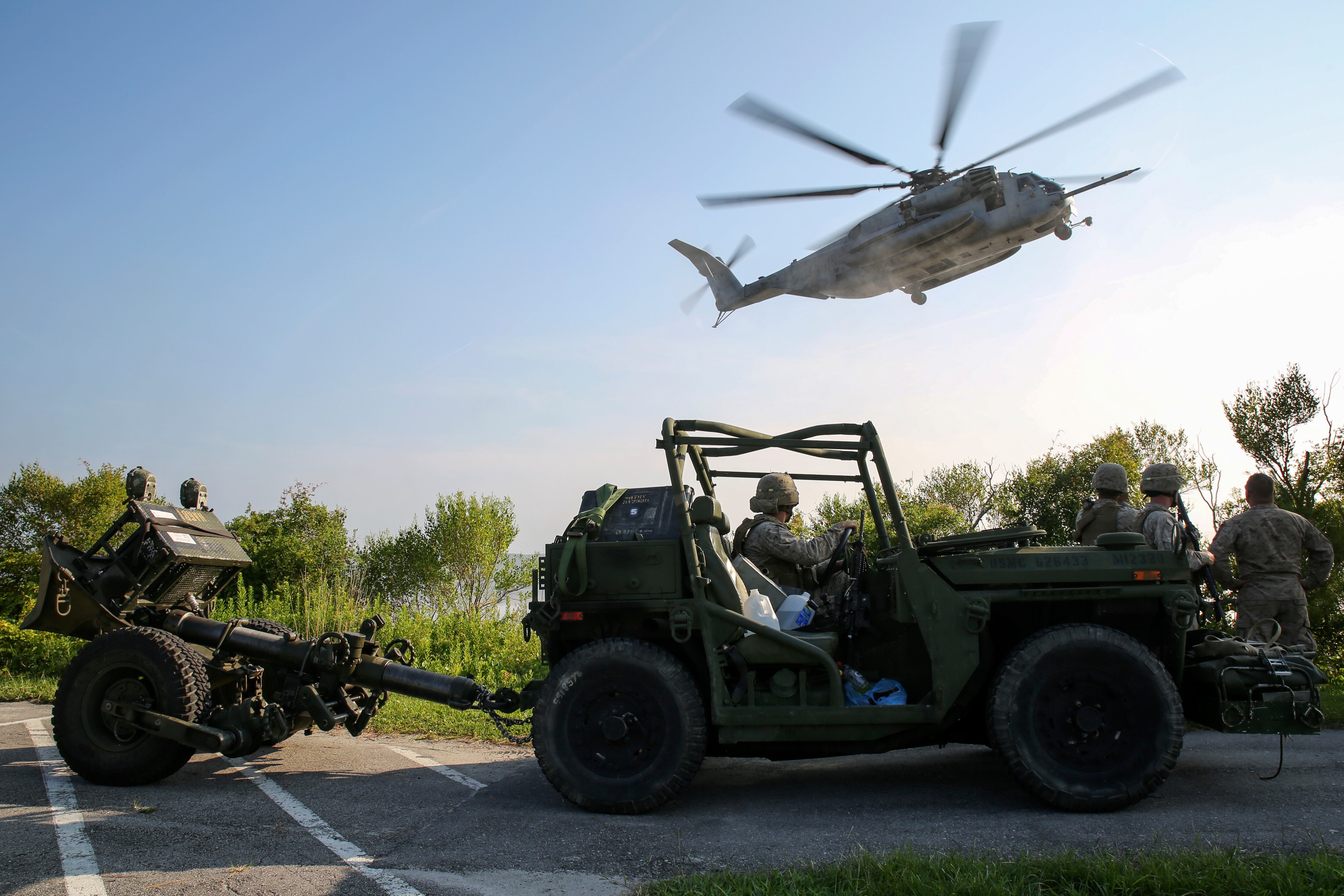The Marine Corps wants released a solicitation June 2 for a new guided 120mm mortar, putting the service a significant step closer to fielding a light munition that will give ground units the ability to strike targets miles out of sight from the horizon.
The solicitation, released in early June via FedBizOpps.gov, will lead to the selection of a single manufacturer for the Precision Extended Range Munition — or PERM, said Barb Hamby a Marine Corps Systems Command spokeswoman at Marine Corps Base Quantico, Virginia according to a procurement official.
"Based on the acquisition strategy, rounds are planned to be fielded in 2018," she said Barb Hamby a Marine Corps Systems Command spokeswoman at Marine Corps Base Quantico, Virginia.
The new round will provide Marines with a mortar that can hit targets from about 12 miles away compared to the current range of between three and five, depending on conditions. It could play a pivotal role in future crisis response operations since it is compatible with the service's relatively new Expeditionary Fire Support System, which consists of two Internally Transportable-Light Strike Vehicles carrying a mortar tube and ammunition supply that can be moved as a single package in the belly of an MV-22B Osprey or slung under a CH-53E Super Stallion.

Members of 2nd Battalion, 10th Marines watch a CH-53E Super Stallion helicopter land July 30, 2014 while waiting to load their Expeditionary Fire Support Systems to conduct an aerial-raid mission aboard Marine Corps Base Camp Lejeune, North Carolina.
Photo Credit: Lance Cpl. Alex W. Mitchell/Marines
PERM, partnered with EFSS, will provide Marines a versatile platform that is ideal for supporting post-Afghanistan operations where speed and mobility will be paramount.
The secret to PERM's range is its ability to make constant corrections as it steers itself towards a target. Even at unprecedented ranges, PERM is able to strike within a meter or two of a target.
During a design and research phase for the existing version of the mortar, which ran since 2013, various companies y's pursued unique designs that ultimately informed requirements for the upgraded version the Marine Corps now wants in the latest solicitation. Exactly which design will win, however, remains to be seen.
Raytheon Co., which won a design contract in 2013, for example, used GPS coordinates and a combination of tail fins and flaps near the nose – technically called canards – to adjust for wind, which can push a round off its flight path after it leaves the tube.
"I liken this to a golf shot," Michael Means, business development lead for Raytheon's PERM program said in 2013 when the company entered design testing. "If you hit a shot and it is windy, it is going to affect the trajectory of that ball and you have to compensate for it."
PERM, in essence, guides itself to a hole-in-one every time. Beyond making it deadlier, that also means Marines use fewer rounds, reducing and thus reduce their need for logistics and resupply burden.
That is critical under the service's new Expeditionary Force 21 concept of operations under which prepositioned Marines will deploy from the sea when crises unexpectedly sparks. Those Marines will have to deploy as a self-contained force and could be expected to operate independently for weeks at a time with little to no initial support or resupply.
"Precision to the Marines is a big deal when you talk about expeditionary missions," Means said about the previous design added. "Having fewer rounds to accomplish the mission is a major deal. If they can accomplish it with one or two rounds, that is a huge logistics benefit."
Raytheon will likely fight it out for a final contract award with companies like Allian Techsystems Inc., which also participated in previous design testing with its own PERM prototype.





